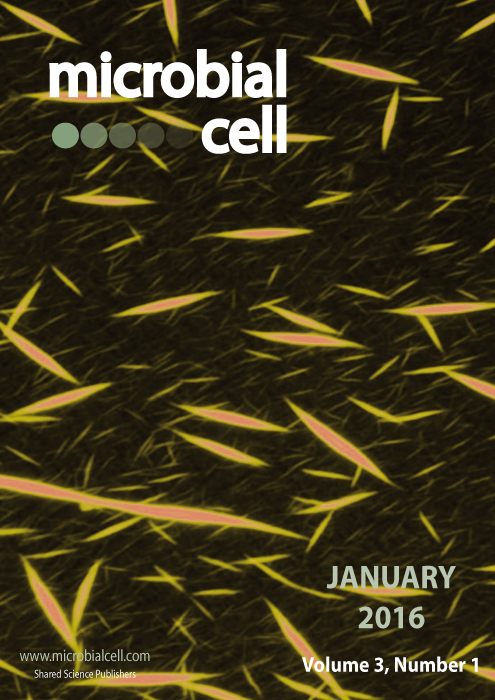Back to issue: January 2016
Microbial Cell – January 2016
Pseudomonas aeruginosa, an opportunistic bacterial pathogen, can produce large amounts of filamentous bacteriophage during growth as a biofilm. Filamentous bacteriophage produced by P. aeruginosa interact with host and microbial polymers to assemble liquid crystals. When the biofilm matrix is organized into a liquid crystalline structure, desiccation survival and antibiotic tolerance are promoted. Pictured, fluorescently labeled filamentous bacteriophage (yellow) spontaneously assemble liquid crystalline networks in the presence of the host polymer hyaluronan. Image by Patrick Secor (University of Washington, USA); modified by MIC. The cover is published under the Creative Commons Attribution (CC BY) license.

